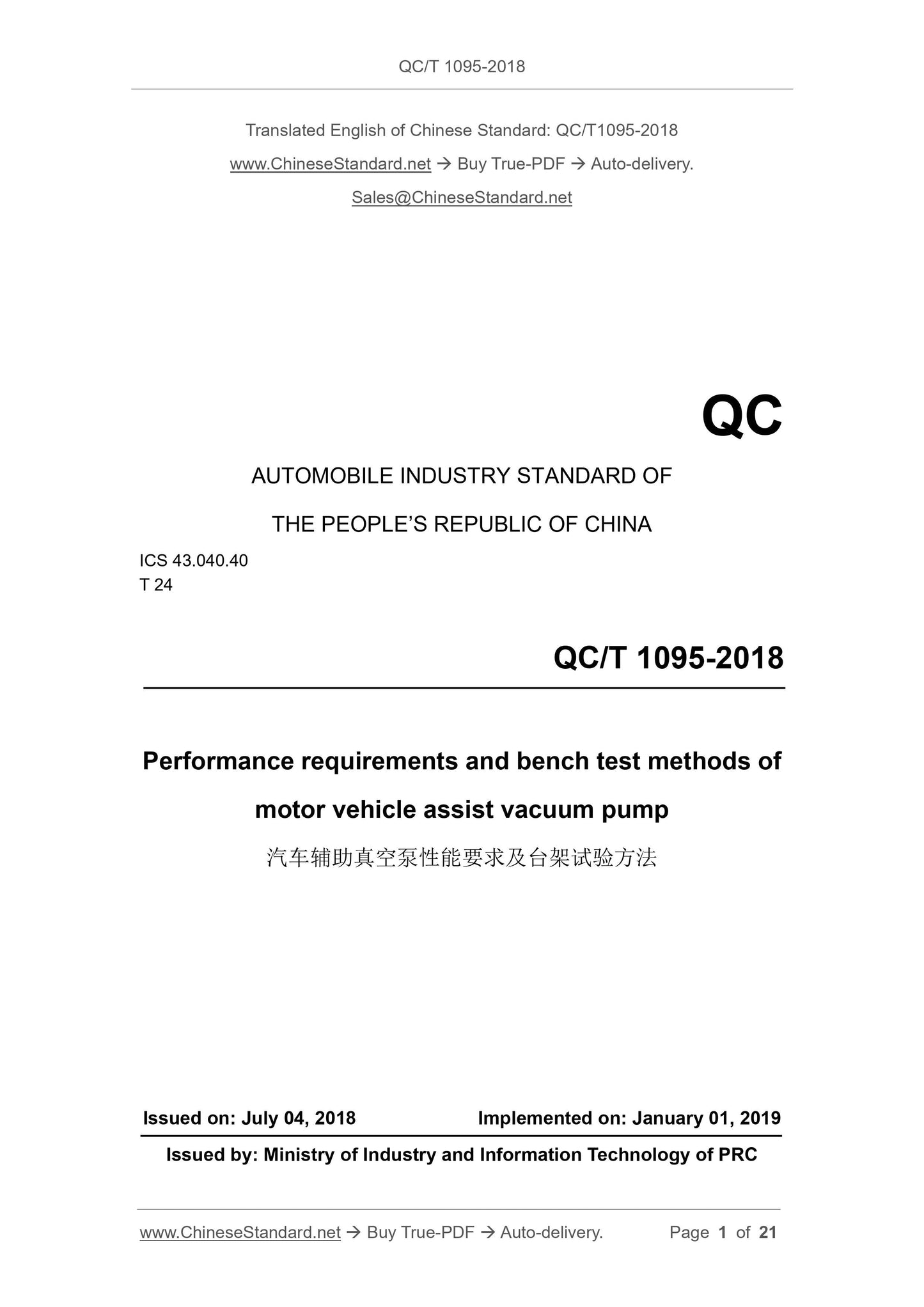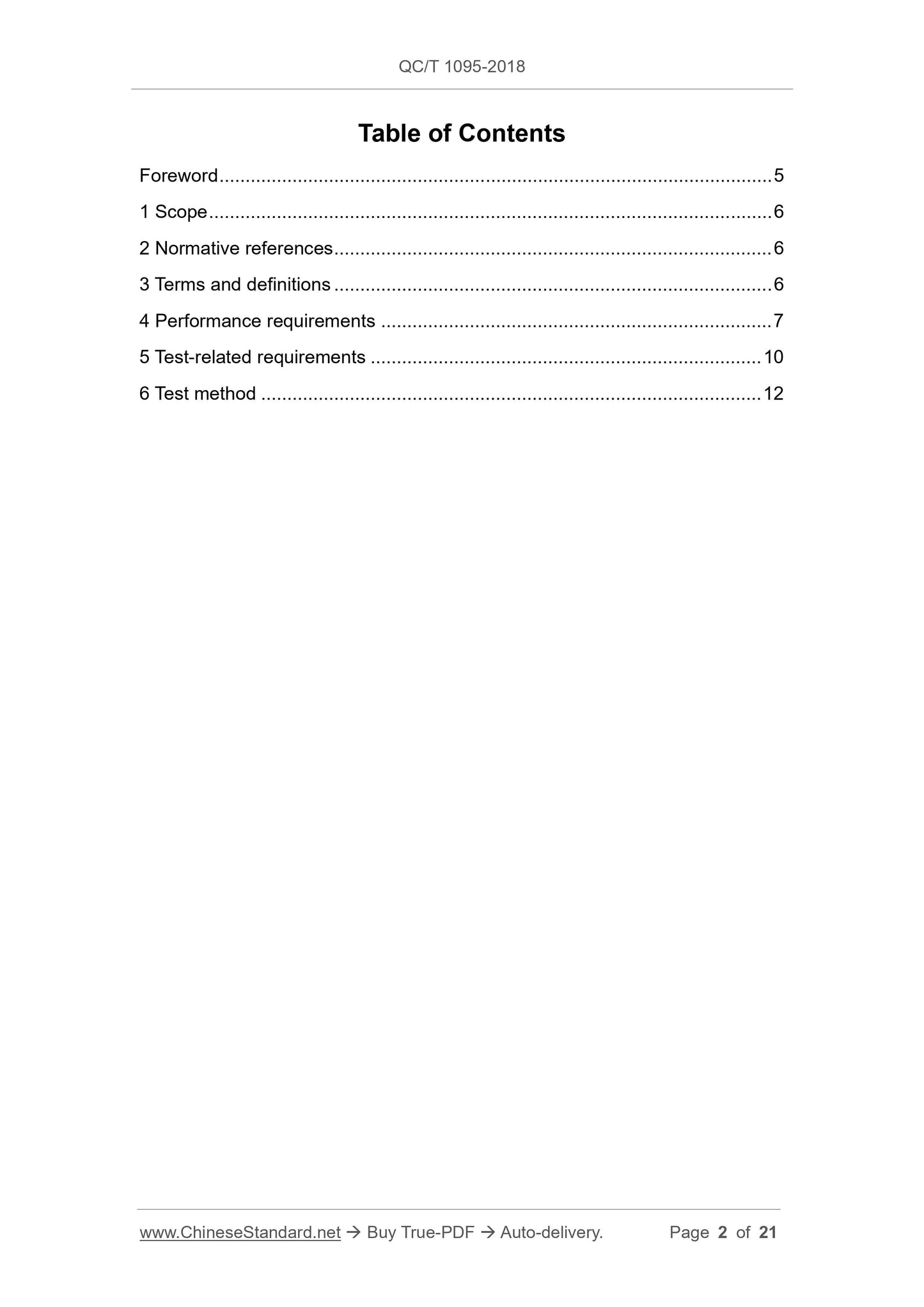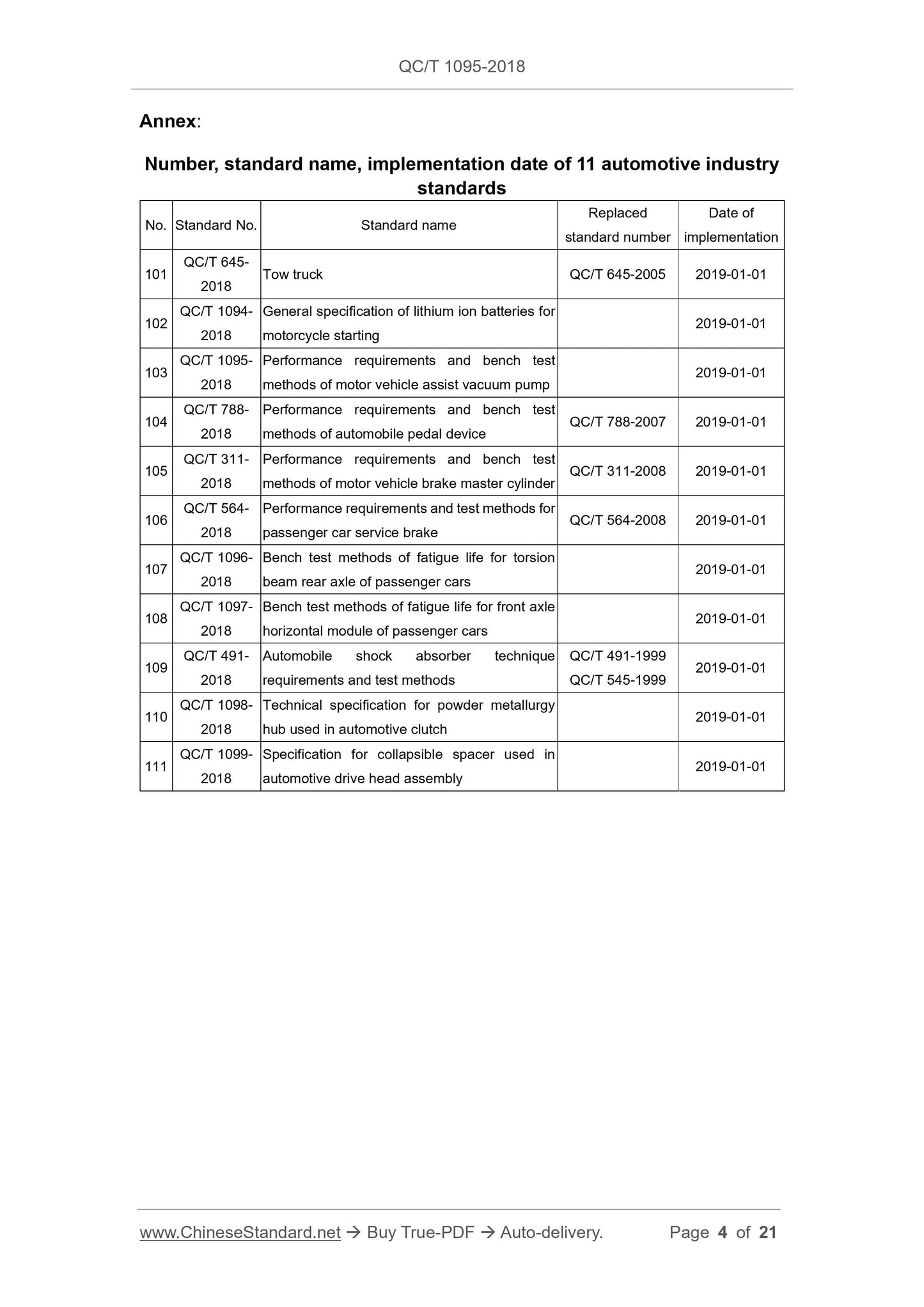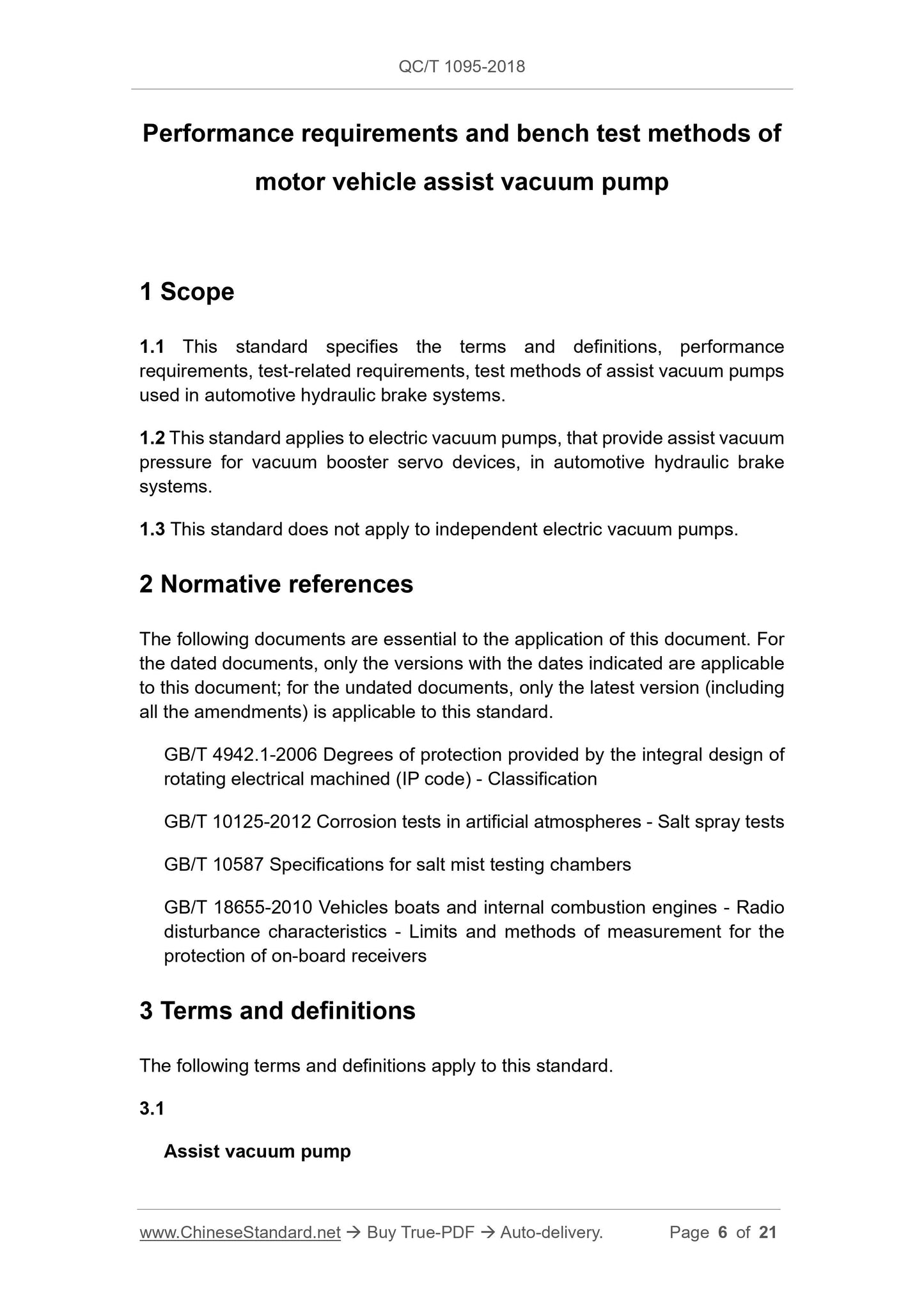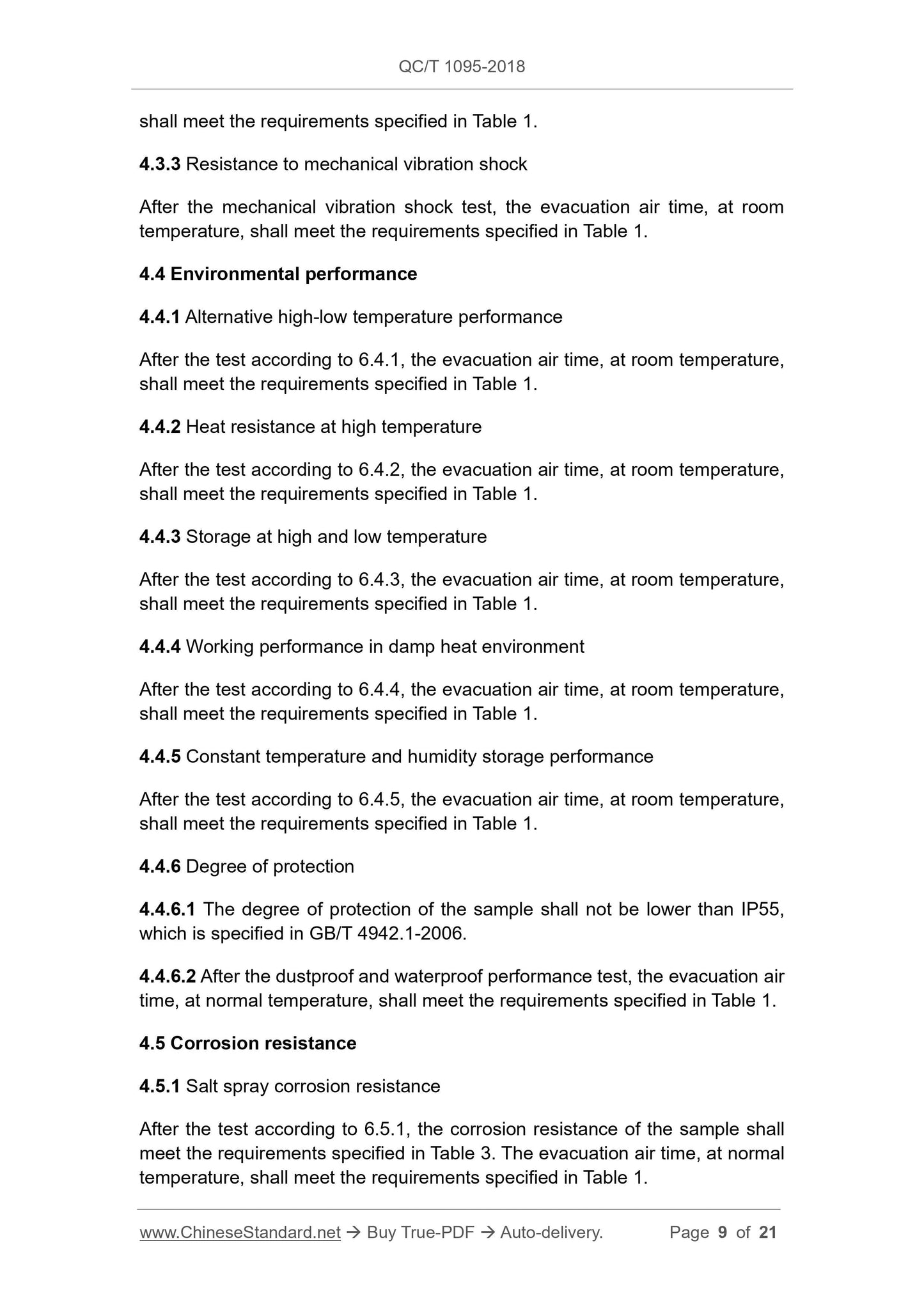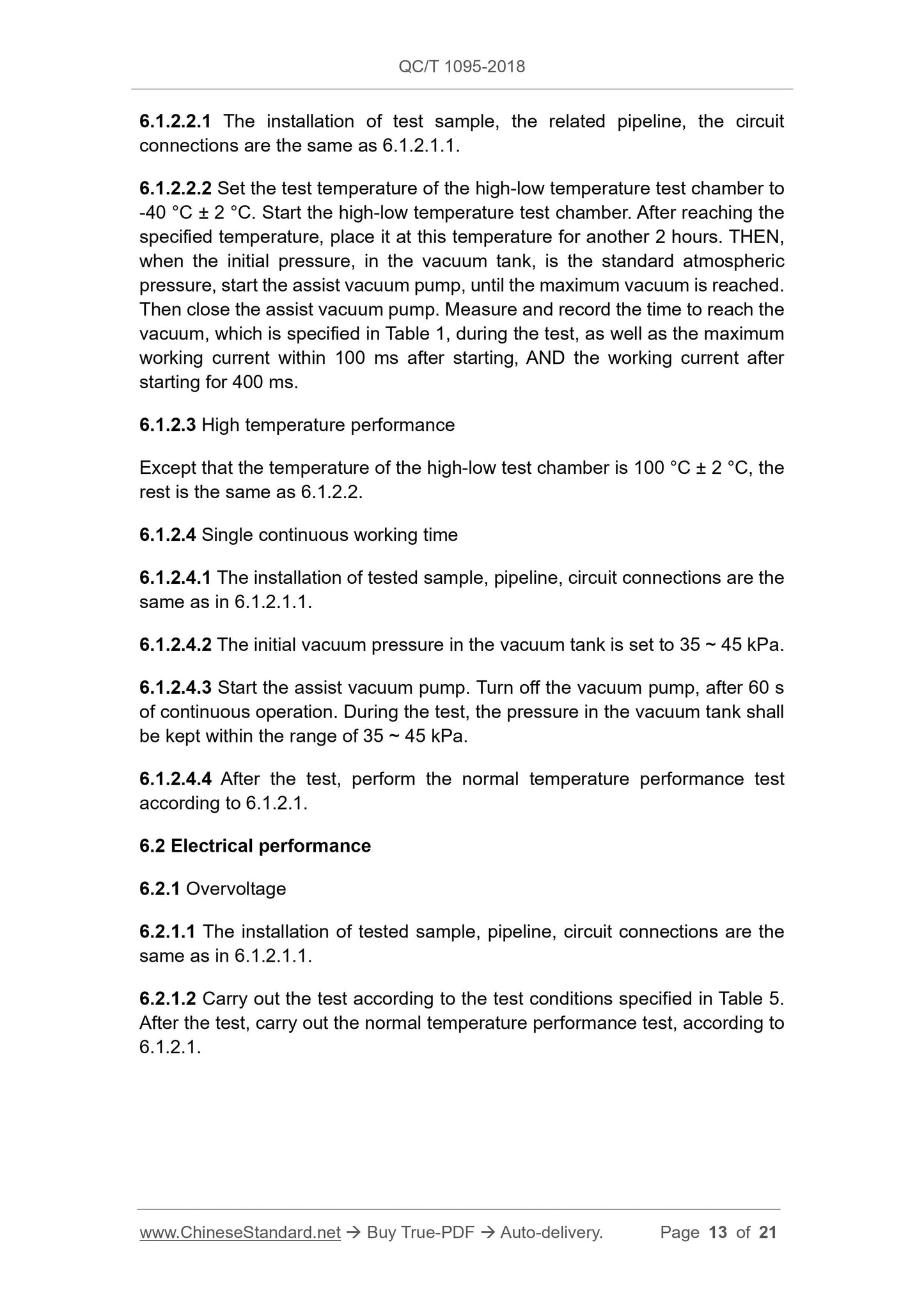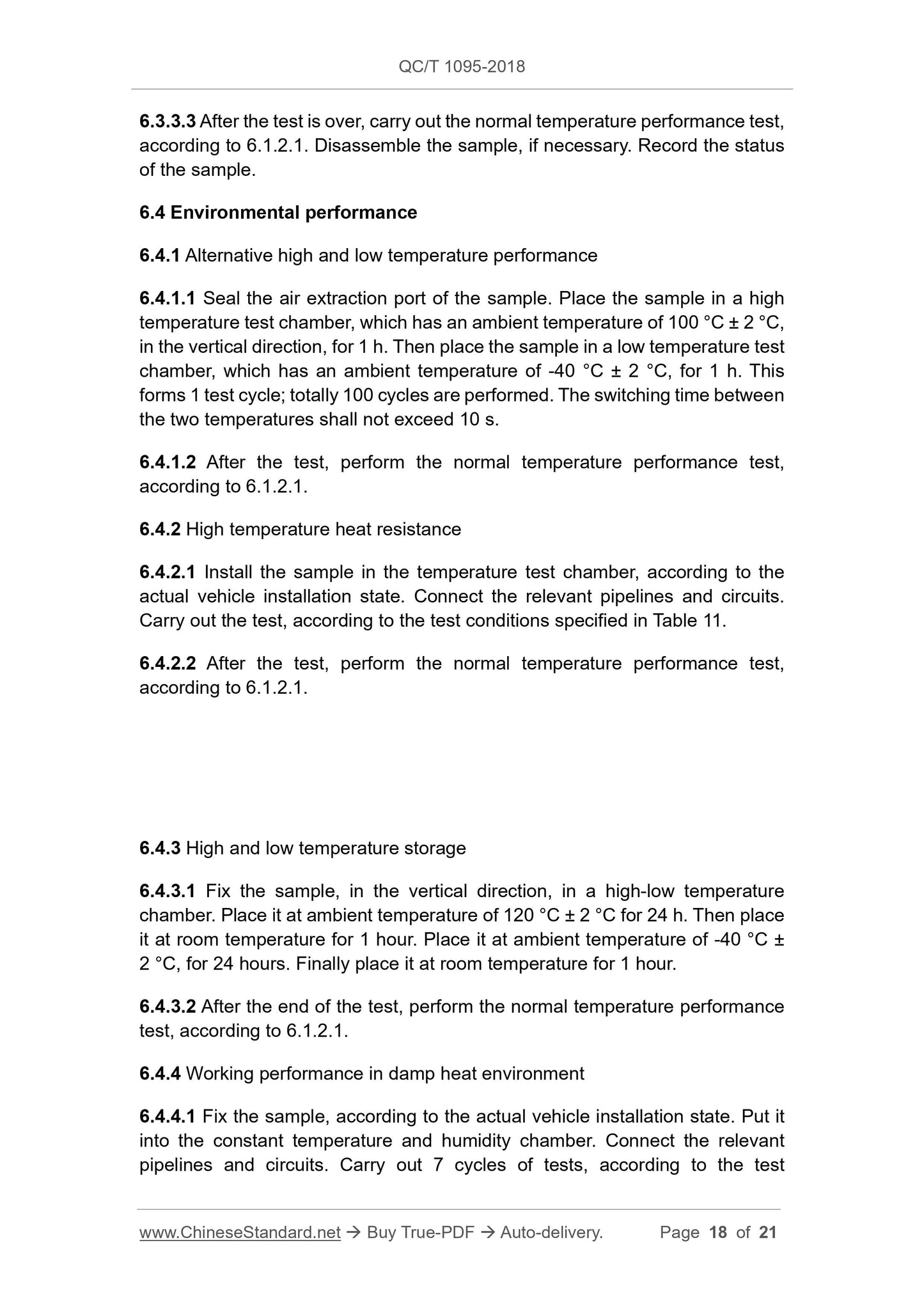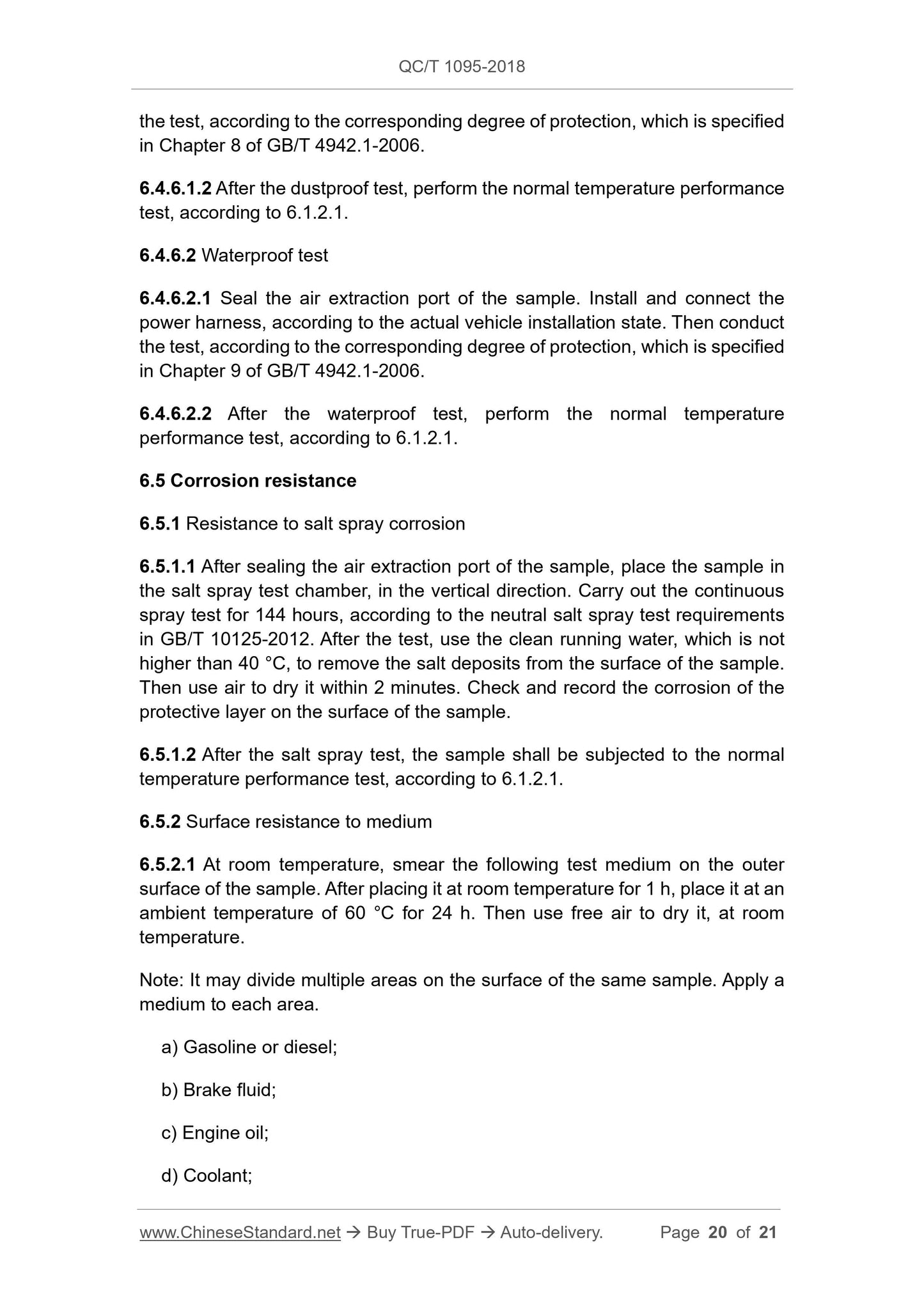1
/
of
8
www.ChineseStandard.us -- Field Test Asia Pte. Ltd.
QC/T 1095-2018 English PDF (QC/T1095-2018)
QC/T 1095-2018 English PDF (QC/T1095-2018)
Regular price
$250.00
Regular price
Sale price
$250.00
Unit price
/
per
Shipping calculated at checkout.
Couldn't load pickup availability
QC/T 1095-2018: Performance requirements and bench test methods of motor vehicle assist vacuum pump
Delivery: 9 seconds. Download (and Email) true-PDF + Invoice.Get Quotation: Click QC/T 1095-2018 (Self-service in 1-minute)
Newer / historical versions: QC/T 1095-2018
Preview True-PDF
Scope
1.1 This standard specifies the terms and definitions, performancerequirements, test-related requirements, test methods of assist vacuum pumps
used in automotive hydraulic brake systems.
1.2 This standard applies to electric vacuum pumps, that provide assist vacuum
pressure for vacuum booster servo devices, in automotive hydraulic brake
systems.
1.3 This standard does not apply to independent electric vacuum pumps.
Basic Data
| Standard ID | QC/T 1095-2018 (QC/T1095-2018) |
| Description (Translated English) | Performance requirements and bench test methods of motor vehicle assist vacuum pump |
| Sector / Industry | Automobile and Vehicle Industry Standard (Recommended) |
| Classification of Chinese Standard | T24 |
| Word Count Estimation | 16,142 |
| Date of Issue | 2018-07-04 |
| Date of Implementation | 2019-01-01 |
| Regulation (derived from) | Ministry of Industry and Information Technology Announcement No.36 of 2018 |
| Issuing agency(ies) | Ministry of Industry and Information Technology |
| Summary | This standard specifies the terms and definitions, performance requirements, test related requirements, and test methods of auxiliary vacuum pumps used in automotive hydraulic brake systems. This standard is applicable to electric vacuum pumps that provide auxiliary vacuum pressure for vacuum assist servo devices in automotive hydraulic brake systems. This standard does not apply to independent electric vacuum pumps. |
Share
